- New Grand Canyon Fossils Show The Evolution Of Early Animals On Earth astrobiology.com
- Grand Canyon Fossils Offer Glimpse Into When Complex Life Appeared The New York Times
- Fossilized penis worm suggests Grand Canyon was an evolutionary hotbed The Washington Post
- Spike-Toothed Worm and Other Creatures Lived in Grand Canyon 500 Million Years Ago Discover Magazine
- Treasure trove of half-billion-year-old animal fossils in Grand Canyon cosmosmagazine.com
Category: 7. Science
-
New Grand Canyon Fossils Show The Evolution Of Early Animals On Earth – astrobiology.com
-
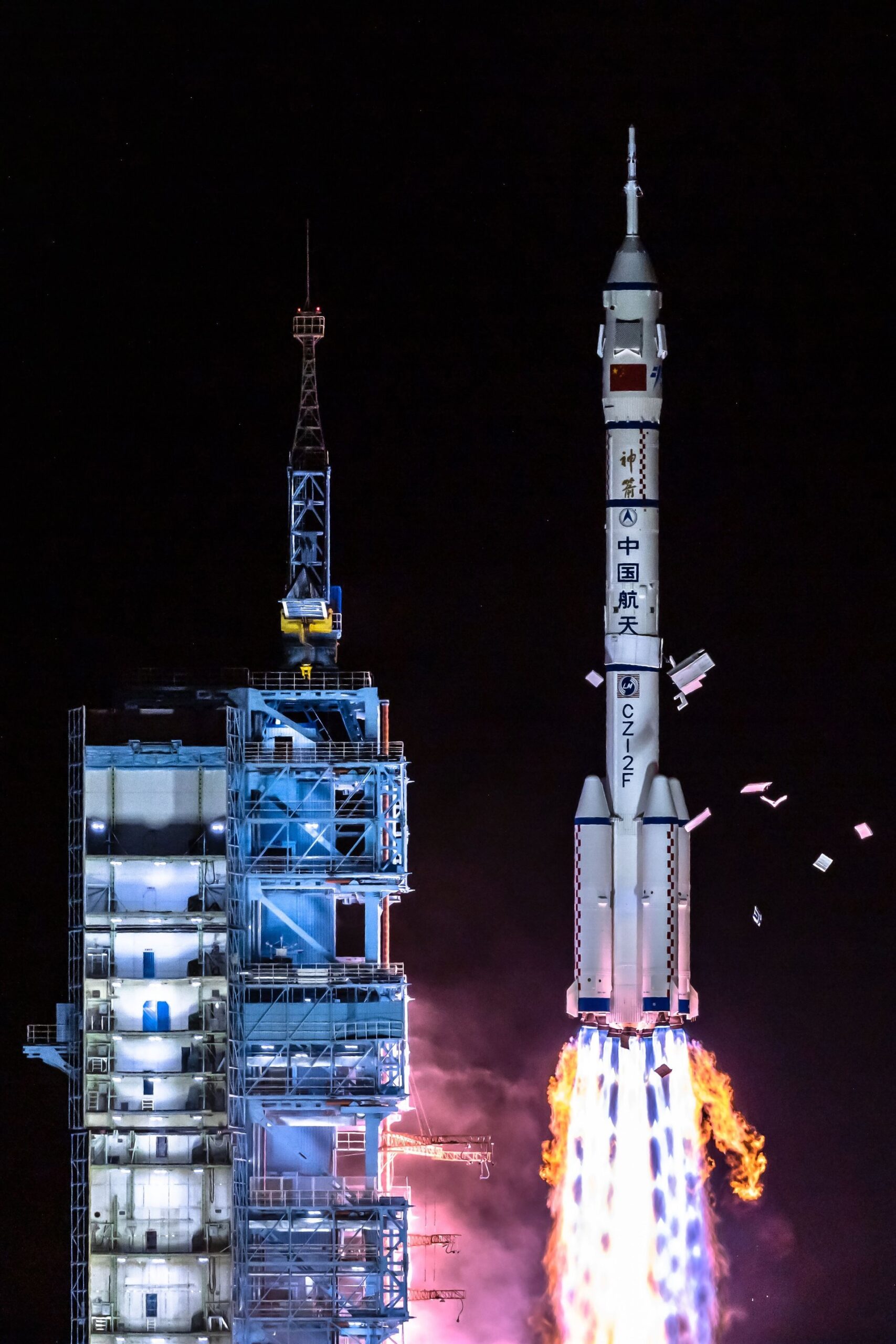
China’s Meteoric Rise Into Space
While NASA maintains the lead in human space exploration, other nations have already begun their own projects. Take the China National Space Agency for example, with their CLEP, or Chinese Lunar Exploration Program. If you have any doubts about the objectives of the program, just check out their logo: a stylized crescent moon with two footprints in the middle.
The logo is meant to also resemble the Chinese character for “Moon”, which in my opinion is rather clever.
Now as we’ve seen with NASA and Artemis, plans are easy to announce but slightly harder to execute. That said, the Chinese have managed quite a few accomplishments in a short period of time.
On October 24, 2007 the Chinese launched the Chang’e 1 mission, named for the traditional goddess of the moon. This was the first launch of Phase I of the plan, which focused solely on orbital missions. The orbiter was a success, providing a detailed map of the entire lunar surface and doing some long-range scouting for future landing sites.
That missions was followed three years later with the appropriately named Chang’e 2, which did the same thing but in greater detail, then sped off to visit the asteroid 4179 Toutatis to help the agency test its communications and command systems.
In 2013 the Chinese upped the ante with Chang’e 3 (can you sense a pattern here?), which was the first soft landing on the moon achieved by that agency. That mission too was a great success, especially with the deployment of a small rover, Yutu.
In fact, that mission was so successful that it delayed the launch of Chang’e 4 because they wanted to add more capabilities to it. On January 3, 2019 the lander reached the South Pole-Aitken Basin on the far side of the moon, which also carried a rover with it, Yutu-2, the first ever rover to explore the far side.
Next up was Phase III, a pair of robotic sample-return missions. The first of missions was just a test, and the second one, Chang’e 5, launched in November 2020 and returned to Earth with 1,731 grams of lunar soil – the first samples to return to Earth since the Apollo era.
The latest mission is, you guessed it, Chang’e 6, which launched on May 3, 2024. This mission was the whole package: a lander back at the South Pole-Aitken Basin, a successful sample return of more lunar material, and a new rover, the Jinchan, to explore the far side some more, because we just can’t get enough of that farside.
While these are all great successes, they were all uncrewed robotic missions. The next in the series, Chang’e 7 expected to launch in 2026 and Chang’e 8 two years later, will begin to set the stage for human presence, developing a sort of robotic base of landers and rovers, with orbiters monitoring the whole thing and relaying communications back and forth to Earth, to test one of the most important aspects of a future lunar base: ISRU.
ISRU is an acronym that you’ll hear a lot about when it comes to future plans for the Moon, Mars, and beyond, and it stands for in-situ resource utilization. The basic idea is that launching stuff to the Moon is expensive…really expensive. And if we want any sort of base or installation there, it would require an enormous amount of resources like air, water, food, and structures to make it happen. So a cleverer approach is to use lunar soil, or regolith, to fabricate structures and pull out useful resources like water. It’s not like we could just 3D print a lunar base out of regolith, but the more we’re able to use local resources, the better our prospects for future long-term habitation.
After this, things start to get a little fuzzy with the Chinese plans. They have announced that they want to send a human mission to the Moon in 2029 or 2030. The mission will require a much beefier launch vehicle than their current capabilities, named the Long March 10, which is currently in development. Think of it like the Chinese version of the SLS or Atlas V, a single-use vehicle designed to throw as much at the Moon as possible. The current plants for it to be capable of lofting 70 tons into low-Earth orbit and 27 tons towards the Moon.
Even with this kind of lift capacity, however, the hypothetical crewed mission will still require two launches: one for the lander, and another for the spacecraft to
take the crew to the Moon. That crew would land on the surface, spend a few days poking around and looking at rocks (I’m just kidding, they’d be doing some intense flight testing and science), and return. A retread of the Apollo-style missions, for sure, but a retread is better than what we have right now, which is…nothing. So good for them.All the components of that mission: the spacecraft, the lander, the spacesuits, all of it, are still under active development. Chinese space officials and leaders tend to keep their cards close to their chest, and it’s not like NASA where the budget undergoes regular public reviews. On the other hand, it’s pretty difficult (as in, impossible) to keep launches and space activity secret, so we know when the Chinese are able to accomplish something, but we don’t know if programs are over budget or facing major delays or technical hurdles.
It’s anybody’s guess if that expected launch date of 2029 or 2030 is reliable or not. When it comes to the Chinese, we’ll just have to wait and see.
Continue Reading
-
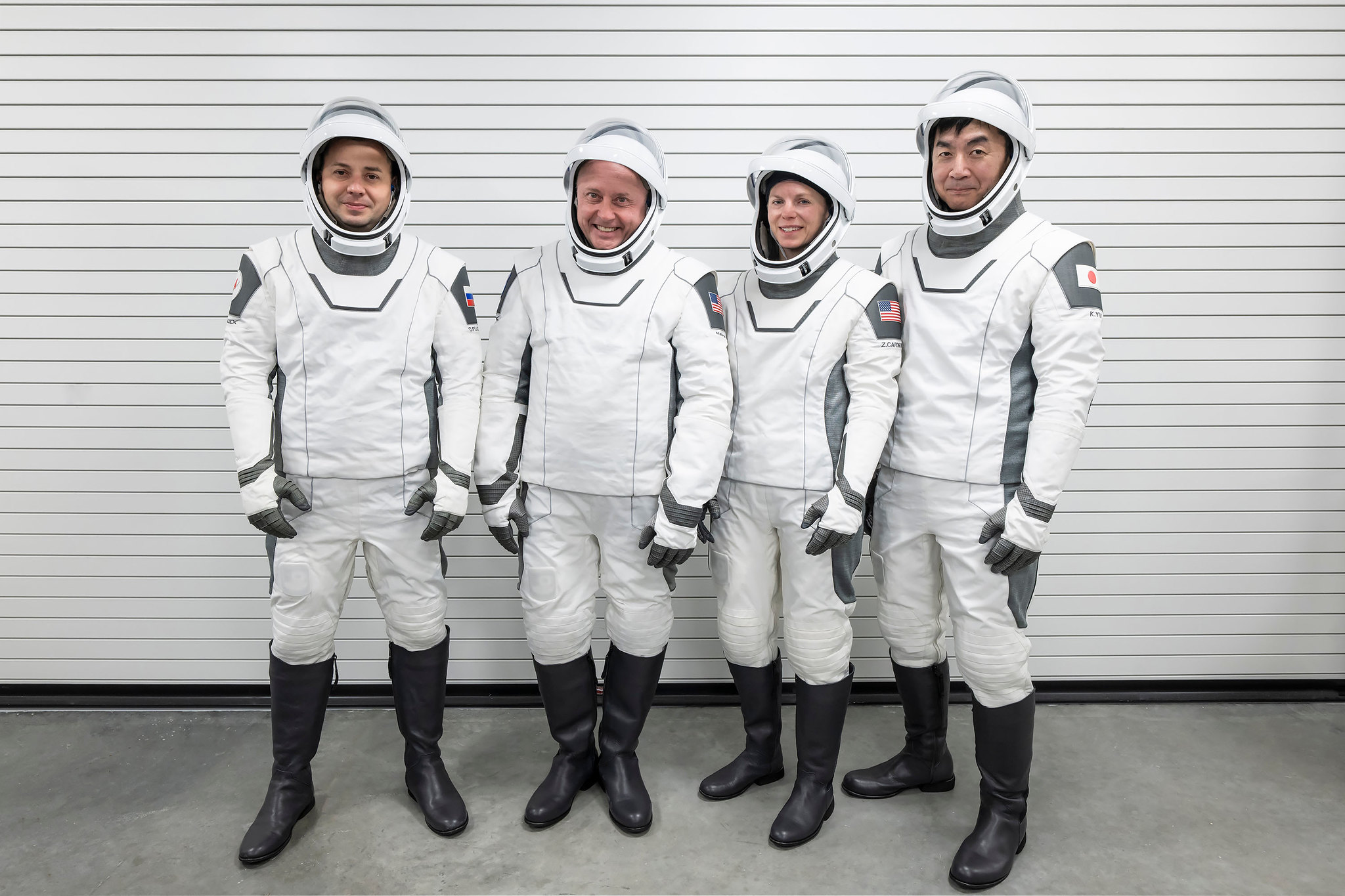
NASA Sets Coverage for Agency’s SpaceX Crew-11 Launch, Docking
NASA will provide coverage of the upcoming prelaunch and launch activities for the agency’s SpaceX Crew-11 mission to the International Space Station.
Liftoff is targeted for 12:09 p.m. EDT, Thursday, July 31, from Launch Complex 39A at NASA’s Kennedy Space Center in Florida. The targeted docking time is approximately 3 a.m., Saturday, Aug. 2.
Watch agency launch coverage on NASA+, Netflix, Amazon Prime and more. Learn how to watch NASA content through a variety of platforms, including social media.
The SpaceX Dragon spacecraft will carry NASA astronauts Zena Cardman and Mike Fincke, JAXA (Japan Aerospace Exploration Agency) astronaut Kimiya Yui, and Roscosmos cosmonaut Oleg Platonov to the orbiting laboratory for a science mission. This is the 11th crew rotation mission and the 12th human spaceflight mission for NASA to the space station supported by the Dragon spacecraft since 2020 as part of the agency’s Commercial Crew Program.
The deadline for media accreditation for in person coverage of this launch has passed. The agency’s media credentialing policy is available online. For questions about media accreditation, please email: ksc-media-accreditat@mail.nasa.gov.
Media who need access to NASA live video feeds may subscribe to the agency’s media resources distribution list to receive daily updates and links.
NASA’s mission coverage is as follows (all times Eastern and subject to change based on real-time operations):
Saturday, July 26
1 p.m. – Crew-11 arrival media event at NASA Kennedy with the following participants:
- Zena Cardman, spacecraft commander, NASA
- Mike Fincke, pilot, NASA
- Kimiya Yui, mission specialist, JAXA
- Oleg Platonov, mission specialist, Roscosmos
Watch live coverage of the crew arrival media event on the NASA Kennedy’s social media accounts.
This event is open to in person media only previously credentialed for this event. Follow @NASAKennedy on X for the latest arrival updates.
Wednesday, July 30
5:30 p.m. – Prelaunch news conference with the following participants:
- Ken Bowersox, associate administrator, NASA’s Space Operations Mission Directorate
- Steve Stich, manager, NASA’s Commercial Crew Program
- Dana Weigel, manager, NASA’s International Space Station Program
- William Gerstenmaier, vice president, Build and Flight Reliability, SpaceX
- Sergei Krikalev, deputy director general, Manned and Automated Complexes, Roscosmos
- Naoki Nagai, program manager, International Space Station, Human Spaceflight Technology Directorate, JAXA
NASA will provide live coverage of the news conference on the agency’s YouTube channel.
Media may ask questions in person and via phone. For the dial-in number and passcode, media should contact the Kennedy newsroom no later than one hour prior to the beginning of the news conference at: ksc-newsroom@mail.nasa.gov.
Thursday, July 31
8 a.m. – Launch coverage begins on NASA+, Netflix, and Amazon Prime.
12:09 p.m. – Launch
Following the conclusion of launch coverage, NASA will distribute audio-only discussions between Crew-11, the space station, and flight controllers during Dragon’s transit to the orbital complex. NASA+ coverage resumes at the start of rendezvous and docking and continues through hatch opening and the welcoming remarks.
1:30 p.m. – Postlaunch news conference with the following participants:
- Ken Bowersox, associate administrator, NASA’s Space Operations Mission Directorate
- Steve Stich, manager, NASA’s Commercial Crew Program
- Dana Weigel, manager, NASA’s International Space Station Program
- Sergei Krikalev, deputy director general, Manned and Automated Complexes, Roscosmos
- Kazuyoshi Kawasaki, associate director general, Space Exploration Center/Space Exploration Innovation Hub Center, JAXA
- Sarah Walker, director, Dragon Mission Management, SpaceX
NASA will provide live coverage of the postlaunch news conference on the agency’s YouTube channel.
Media may ask questions in person and via phone. Limited auditorium space will be available for in person participation. For the dial-in number and passcode, please contact the Kennedy newsroom no later than one hour prior to the beginning of the news conference at ksc-newsroom@mail.nasa.gov.
Saturday, Aug. 2
1 a.m. – Arrival coverage begins on NASA+.
3 a.m. – Targeted docking to the space-facing port of the station’s Harmony module.
4:45 a.m. – Hatch opening
5:30 a.m. – Welcome ceremony
All times are estimates and could be adjusted based on real-time operations after launch. Follow the space station blog for the most up-to-date operations information.
Live Video Coverage Prior to Launch
NASA will provide a live video feed of Launch Complex 39A approximately six hours prior to the planned liftoff of the Crew-11 mission. Pending unlikely technical issues, the feed will be uninterrupted until the prelaunch broadcast begins on NASA+, approximately four hours prior to launch. Once the feed is live, find it online at: http://youtube.com/kscnewsroom.
NASA Website Launch Coverage
Launch day coverage of the mission will be available on the NASA website. Coverage will include livestreaming and blog updates beginning no earlier than 8 a.m., July 31, as the countdown milestones occur. On-demand streaming video on NASA+ and photos of the launch will be available shortly after liftoff. For questions about countdown coverage, contact the NASA Kennedy newsroom at 321-867-2468. Follow countdown coverage on the commercial crew or Crew-11 blog.
Attend Launch Virtually
Members of the public may register to attend this launch virtually. NASA’s virtual guest program for this mission also includes curated launch resources, notifications about related opportunities or changes, and a stamp for the NASA virtual guest passport following launch.
Audio Only Coverage
Launch audio also will be available on Launch Information Service and Amateur Television System’s VHF radio frequency 146.940 MHz and KSC Amateur Radio Club’s UHF radio frequency 444.925 MHz, FM mode, heard within Brevard County on the Space Coast.
Watch, Engage on Social Media
Let people know you’re following the mission on X, Facebook, and Instagram by using the hashtags #Crew11 and #NASASocial. You may also stay connected by following and tagging these accounts:
X: @NASA, @NASAKennedy, @Space_Station, @ISS National Lab, @SpaceX
Facebook: NASA, NASAKennedy, ISS, ISS National Lab
Instagram: @NASA, @NASAKennedy, @ISS, @ISSNationalLab, @SpaceX
Coverage en Espanol
Did you know NASA has a Spanish section called NASA en Espanol? Check out NASA en Espanol on X, Instagram, Facebook, and YouTube for additional mission coverage.
Para obtener información sobre cobertura en español en el Centro Espacial Kennedy o si desea solicitar entrevistas en español, comuníquese con Antonia Jaramillo: 321-501-8425; antonia.jaramillobotero@nasa.gov; o Messod Bendayan: 256-930-1371; messod.c.bendayan@nasa.gov.
NASA’s Commercial Crew Program has delivered on its goal of safe, reliable, and cost-effective transportation to and from the International Space Station from the United States through a partnership with American private industry. This partnership is opening access to low Earth orbit and the International Space Station to more people, more science, and more commercial opportunities. For almost 25 years, humans have continuously lived and worked aboard the International Space Station, advancing scientific knowledge and demonstrating new technologies that enable us to prepare for human exploration of the Moon as we prepare for Mars.
For more information about the mission, visit:
https://www.nasa.gov/commercialcrew
-end-
Joshua Finch / Claire O’Shea
Headquarters, Washington
202-358-1100
joshua.a.finch@nasa.gov / claire.a.o’shea@nasa.govSteven Siceloff / Stephanie Plucinsky
Kennedy Space Center, Florida
321-867-2468
steven.p.siceloff@nasa.gov / stephanie.n.plucinsky@nasa.govJoseph Zakrzewski
Johnson Space Center, Houston
281-483-5111
joseph.a.zakrzewski@nasa.gov
Continue Reading
-
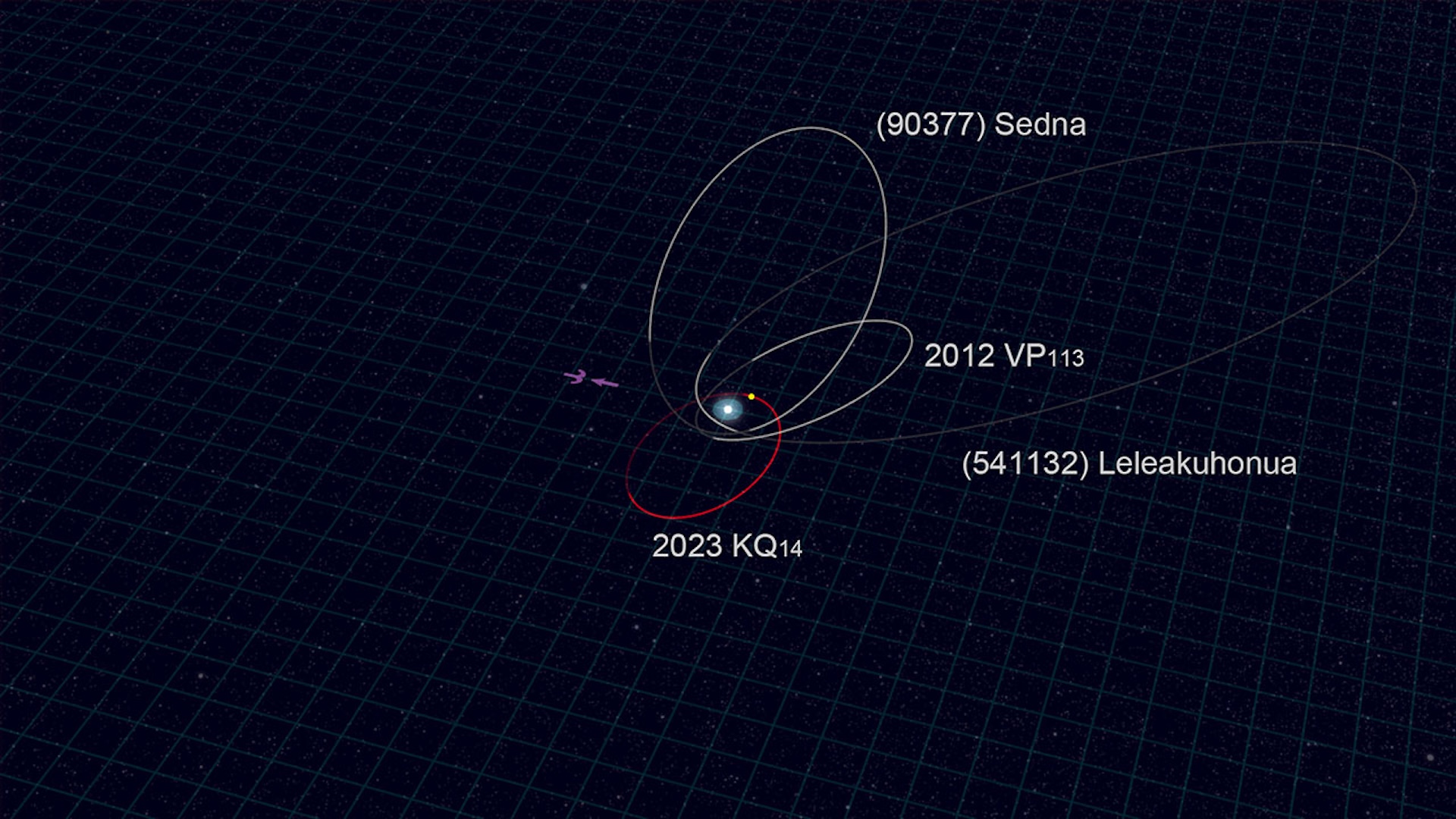
New dwarf planet ‘Ammonite’ discovered in the frosty edges of the solar system — and it could mean Planet Nine doesn’t exist
Astronomers have discovered a possible new dwarf planet orbiting far beyond Pluto. First detected in March 2023 by Japan’s Subaru Telescope in Hawaii, this object has been dubbed 2023 KQ14 and nicknamed Ammonite. Ammonite’s appearance also puts a kink in what’s known as the Planet Nine hypothesis, which suggests there may be an undiscovered ninth planet in our solar system.
Led by researchers in Japan, the team announced Ammonite’s discovery in a paper published July 14 in the journal Nature Astronomy. The body gets its moniker from the fossil of a long-extinct cephalopod because it was identified as part of the survey project Formation of the Outer Solar System: An Icy Legacy, or FOSSIL.
Ammonite is classified as a sednoid, which is an object beyond Neptune — our solar system’s outermost confirmed planet — with a peculiar orbit. It’s now the fourth sednoid discovered. The term “sednoid” comes from the dwarf planet Sedna, which exists at our solar system’s edge and was discovered in 2004.
When describing the orbits of celestial bodies, astronomers use astronomical units (AU). The distance between Earth and the sun is approximately 1 AU. Following an elliptical path, Sedna is about 76 AU from the sun at its nearest point (perihelion) and 900 AU at its farthest (aphelion). Ammonite, meanwhile, is between 66 and 252 AU from the sun at the closest and farthest points in its orbit.
The discovery of 2023 KQ14 detracts from the possibility that there could be a ninth planet for our solar system, according to the study authors. First proposed in 2016, the Planet Nine hypothesis suggests there may be a Neptune-size planet orbiting the sun about 20 to 30 times farther from the sun than Neptune is.
This planet would explain the eccentric orbits of smaller bodies in the Kuiper Belt, which is the vast expanse of icy rocks that encompasses the outer solar system. It’s believed that the gravity of a much more massive body, like a planet, may be shepherding these smaller objects. However, the relationship between the newest sednoid’s orbit and that of the other three known sednoids calls this hypothesis into question.
“The planet 9 hypothesis is based on the fact that the known Sednoids have their orbit cluster on one side of the solar system,” study co-author Shiang-Yu Wang, a research fellow at the Institute of Astronomy and Astrophysics in Taiwan, told Live Science in an email.
Related: What are dwarf planets — and how many are there?
Ammonite is unique among these sednoids because its orbit is on the opposite side — its furthest point from the sun is in the opposite direction from the other sednoids’ furthest points. The fact that there is now a known object orbiting on this path decreases the possibility that a large planet could be out there, too.
“The fact that 2023 KQ14’s current orbit does not align with those of the other three sednoids lowers the likelihood of the Planet Nine hypothesis,” study co-author Yukun Huang, a project research fellow at the National Astronomical Observatory of Japan’s Center for Computational Astrophysics, said in a press release. “It is possible that a planet once existed in the Solar System but was later ejected, causing the unusual orbits we see today.”
Other astronomers also believe Ammonite throws a wrench in this hypothesis. “The trouble is the evidence from the alignment has never been scientifically convincing and hasn’t really grown stronger, even over the last 10 years or so,” David Jewitt, a professor of astronomy at the University of California, Los Angeles who was not involved in Ammonite’s discovery, told Live Science.
“Ammonite does not align with these six other objects, so weakens the case for Planet Nine, or means it must be very remote and correspondingly difficult to detect,” Christopher Impey, an astronomy professor at the University of Arizona who was not involved in the sednoid’s discovery, told Live Science.
But Impey is confident that, if there really is a Planet Nine, the newly activated Vera C. Rubin Observatory in Chile will soon be able to confirm it. “If Planet Nine exists, it will almost certainly be found in that survey data within a few years,” he said.
Continue Reading
-
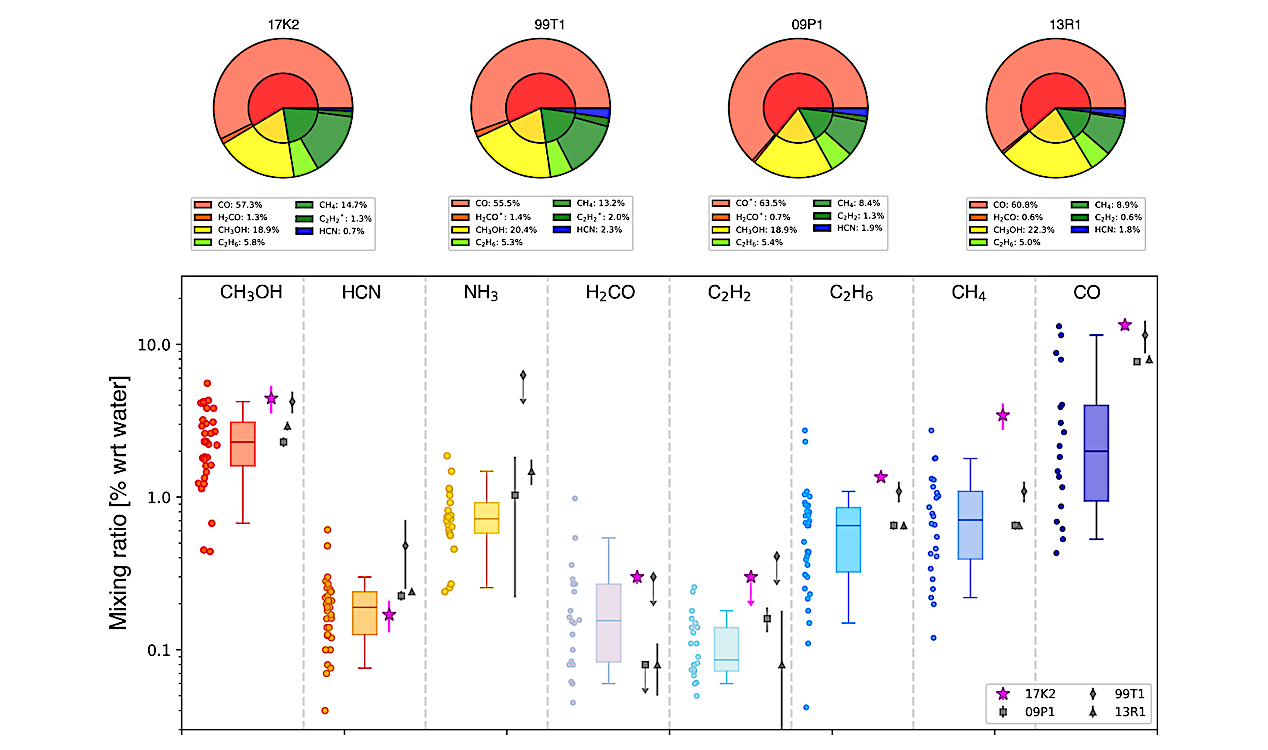
Variations in Volatile-Driven Activity of Comet C/2017 K2 (PanSTARRS) Revealed by Long-Term Multi-Wavelength Observations
Comparison of K2 with other comets. In the upper panel, the comet is compared with C/2009 P1, C/1999 T1, and C/2013 R1, which show the closest relative abundance proportions. In the bottom plot, for each molecular species, we compare K2 (marked with a magenta star) with the box plot statistic from other infrared results relative to comets observed within 2 au from the Sun (Lippi et al. 2021). For each box, the middle line corresponds to the median, the box limits to the 25th and 75th percentiles, and the whiskers to the 5th and 95th percentiles. C/2009 P1, C/1999 T1, and C/2013 R1 are also shown with a gray square, diamond, and triangle, respectively. — astro-ph.EP
Context. A comprehensive study of comets over a wide heliocentric distance range helps us understand the physical processes driving their activity and reveals compositional differences across dynamical groups. C/2017 K2 (PANSTARRS) is a Dynamically New Oort Cloud comet (DNC) that showed activity as far as 23.75 au and displayed a CO-rich coma at 6.72 au, making it a key object to investigate pre- and post-perihelion behavior.
Aims. We aim to study the long-term activity evolution and chemical composition of C/2017 K2 using photometry and spectroscopy, from October 2017 (rh = 15.18 au) pre-perihelion to April 2025 (rh = 8.46 au) post-perihelion.
Methods. Broad-band and narrow-band imaging from both TRAPPIST telescopes enabled us to produce an 8-year light curve, color analysis, and derivation of activity slopes. Production rates of OH, NH, CN, C3, and C2 were computed using a Haser model, along with the dust proxy A(0)fρ. High-resolution spectra from CRIRES+ and UVES at three epochs (May – September 2022) provided simultaneous observations of parent and daughter species as the comet crossed the water sublimation zone.
Results. The light curve of C/2017 K2 shows a complex evolution with varying slopes and a brightness plateau around perihelion, indicating multiple active species. Coma colors remained constant, suggesting uniform dust properties and similarity to other active long-period comets. Gas production rates indicate a typical C2/CN composition with a high dust-to-gas ratio. Analysis of forbidden oxygen lines shows a transition from CO and CO2-driven activity to water-driven sublimation inside 3 au. Infrared spectra reveal C/2017 K2 as a typical-to-enriched comet, with HCN identified as the main parent of CN, and C2 likely originating from C2H2 rather than C2H6.
S. Hmiddouch, E. Jehin, M. Lippi, M. Vander Donckt, K. Aravind, D. Hutsemékers, J. Manfroid, A. Jabiri, Y. Moulane, Z. Benkhaldoun
Comments: 17 pages, 16 figures, 14 tables, Accepted for publication in A&A
Subjects: Earth and Planetary Astrophysics (astro-ph.EP)
Cite as: arXiv:2507.13451 [astro-ph.EP] (or arXiv:2507.13451v1 [astro-ph.EP] for this version)
https://doi.org/10.48550/arXiv.2507.13451
Focus to learn more
Submission history
From: Said Hmiddouch
[v1] Thu, 17 Jul 2025 18:00:20 UTC (5,500 KB)
https://arxiv.org/abs/2507.13451
Astrobiology, Astrochemistry,Continue Reading
-
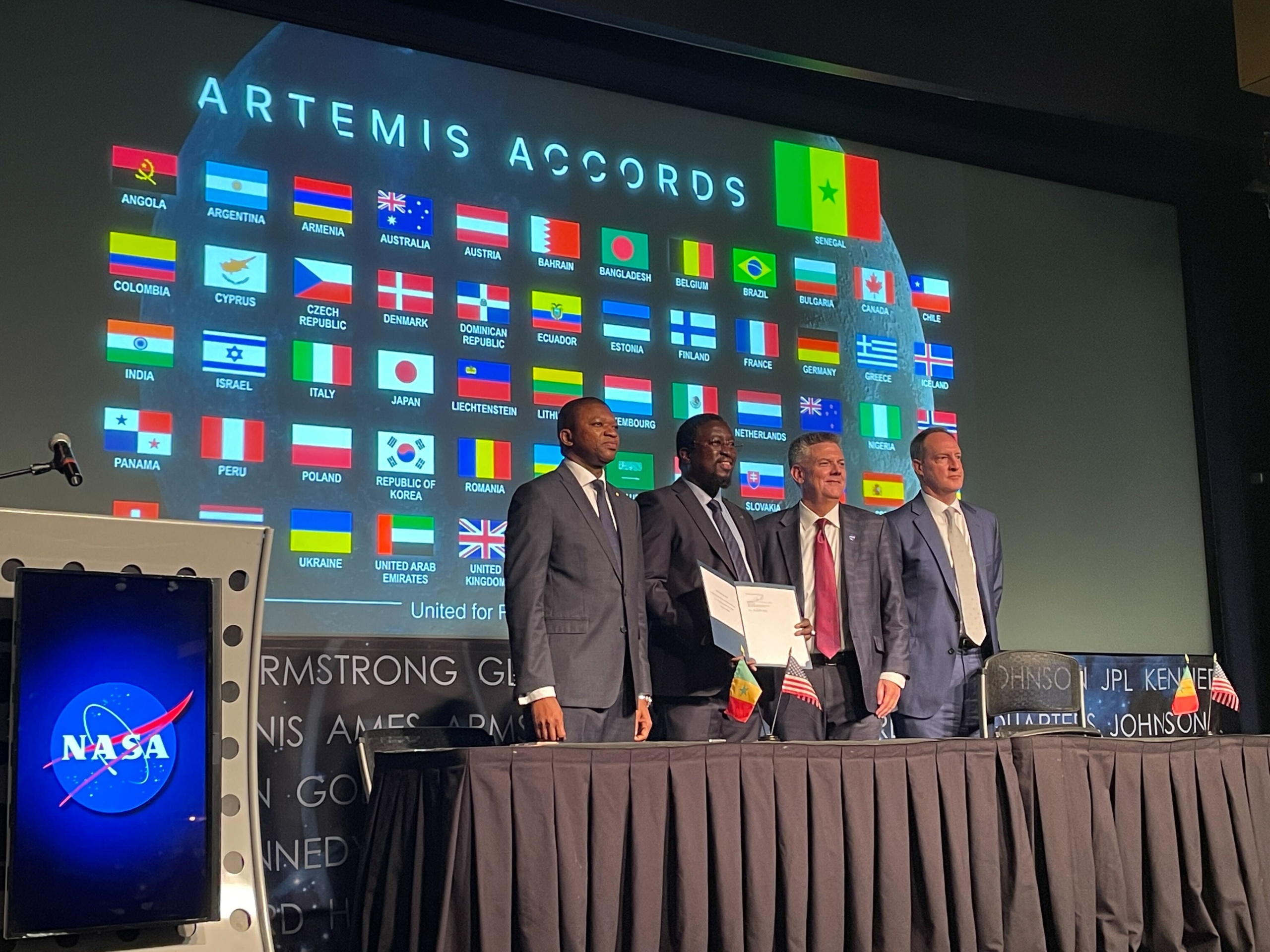
Senegal Becomes 2nd ILRS Member to Join Artemis Accords
Senegal became the 56th nation to join the Artemis Accords on Thursday—and just the second country to join both the US-led coalition and a rival Chinese-led initiative to build a lunar research station.
“Senegal chooses to join the great human adventure that has always driven us to explore the unknown,” Maram Kairé, the director general of the Senegalese Agency for Space Studies, said at a ceremony at NASA HQ in DC. “This signature marks a meaningful step in our space diplomacy and in our ambition to contribute to the peaceful exploration of outer space.”
A bit of history: The African nation established its space agency in March 2023, and launched its first satellite, an EO nanosat dubbed Gaindesat-1A, in August 2024. Senegal may not be a space power, but Kairé emphasized the critical role assets in orbit have in protecting the nation’s agriculture industry.
“Space is not a luxury for us,” he said. “It is a tool of development.”
Multiple choice: The global initiative to explore the Moon has largely split into two camps:
- The Artemis Accords, established in 2020 by the US and seven other founding nations,. The non-binding agreement sets best practices for responsible and transparent space exploration, and greenlights lunar resource extraction.
- The International Lunar Research Station, an initiative spearheaded by China to build a scientific station on the Moon’s south pole by 2035. The ILRS has more than a dozen members.
US officials have previously made clear that all nations are welcome in the Artemis Accords, and that they are not asking countries to choose between the two groups. Still, only two nations have now made the decision to sign onto both frameworks.
Look back: Thailand became the first ILRS member to join the Artemis Accords in December.
Set the scene: In the absence of the interim and deputy NASA administrators, Brian Hughes, NASA’s chief of staff, led the ceremony on the US side, joined by Jonathan Pratt, a State Department official leading the agency’s Bureau of African Affairs.
“As we welcome Senegal, we show the world that America leads with its friends,” Hughes said. “With this signature, Senegal tells the world it is committed to upholding these principles.”
Continue Reading
-
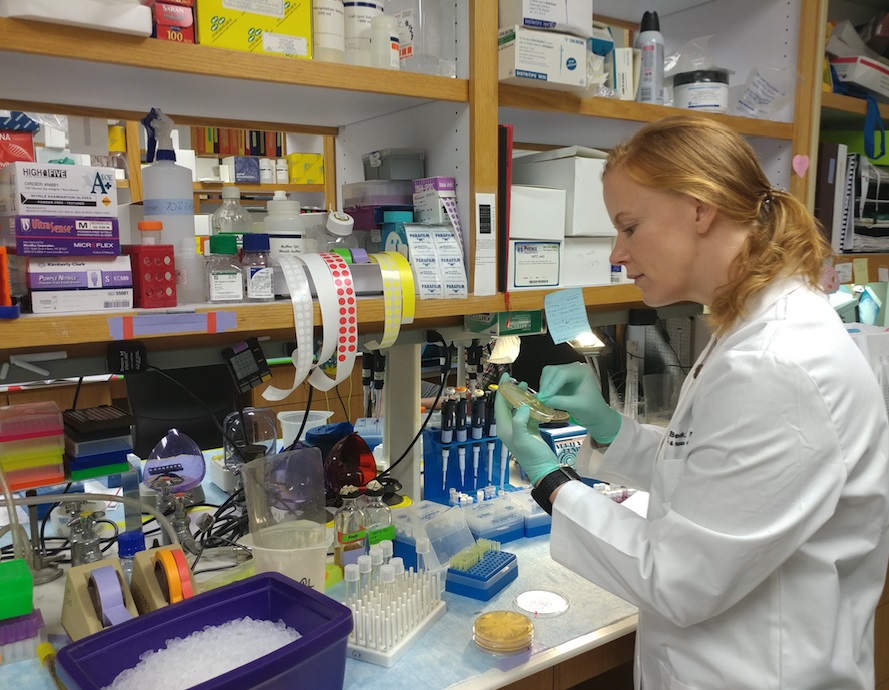
Human Genome Breakthrough Boosts Precision Medicine
New collaborative research by UConn Health and The Jackson Laboratory decodes the most elusive, difficult-to-sequence regions of the genome from populations around the world.
New study findings are rewriting our knowledge of human biology and setting a new benchmark for precision medicine.
An international team of scientists has decoded some of the most stubborn, overlooked regions of the human genome using complete sequences from 65 individuals across diverse ancestries. The study, published online in Nature and co-led by The Jackson Laboratory (JAX) and UConn Health, reveals how hidden DNA variations that influence everything from digestion and immune response to muscle control-and could explain why certain diseases strike some populations harder than others.
This milestone builds on two foundational studies that reshaped the field of genomics. In 2022, researchers achieved the first-ever complete sequence of a single human genome, filling in major gaps left by the original Human Genome Project. In 2023, scientists released a draft pangenome constructed from 47 individuals-a critical step toward representing global genetic diversity. The new study significantly expands on both efforts, closing 92% of the remaining data gaps and mapping genomic variation across ancestries with a breadth and resolution never achieved.
“For too long, our genetic references have excluded much of the world’s population,” said Christine Beck, a geneticist at JAX and UConn Health at its UConn School of Medicine who co-led the work. “This work captures essential variation that helps explain why disease risk isn’t the same for everyone. Our genomes are not static, and neither is our understanding of them.”
By decoding DNA segments once thought too complex or variable to analyze, the study sets a new gold standard for genome sequencing and propels the field toward a more complete and inclusive vision of human biology. The findings clear a critical path for advancing precision medicine and ensuring that future discoveries benefit all populations-not just those historically overrepresented in research.
This work was conducted in collaboration with more than 20 institutions, including the University of Washington, the European Molecular Biology Laboratory, Heinrich Heine University, University of Pennsylvania, Clemson University, Yale University and the University of Colorado under the auspices of the Human Genome Structural Variation Consortium.
Hiding within our DNA
“It’s only been in the last three years that finally technology got to the point where we can sequence complete genomes,” said Charles Lee, the Robert Alvine Family Endowed Chair and a JAX geneticist who in 2004 discovered the widespread presence of structural DNA variation in people’s genomes. “Now, we’ve captured probably 95% or more of all these structural variants in each genome sequenced and analyzed. Having done this for not five, not 10, not 20-but 65 genomes-is an incredible feat.”
Scientists decode DNA by reading the order of its building blocks, called nucleotides, which act like letters in an instruction manual to direct all body functions. Current technologies can read most of that text but often miss or misread long, complex, and highly repetitive segments that span millions of letters that influence how genes work. These long stretches are called structural variants, and they can increase disease risk, protect the body, or offer no apparent effect at all.
Structural variants mainly arise when cells replicate and repair DNA, especially in sections with extremely long and repetitive sequences prone to errors. Unlike many other types of genetic variation, there are different types of structural variants, and they can span large regions of DNA. These structural variants include deletions, duplications, insertions, inversions, and translocations of genome segments. More complex variations, where large DNA chunks rearrange and fuse in unpredictable ways, were a primary focus of the new study.
Complex rearrangements of genomes can also drive evolutionary changes that shape our biology, like how the human brain became larger and more sophisticated over time. But mapping these changes contiguously is remarkably difficult because they scramble the genome in ways that defy decoding – like trying to make sense of pages from a book that’s been torn up, rearranged, and reassembled without seeing the original version.
Turning on the light
Until now, geneticists could only chart the “easiest” of structural variations in our DNA, leaving in the dark not only the most tangled, repetitive regions, but also their connection to rare genetic diseases. The new research has now broken that logjam, untangling 1,852 previously intractable complex structural variants and sharing an open-source playbook that any scientists sequencing genomes to this level can use in their laboratories.
Resolving these previously “hidden” regions across a wide range of ancestries turns areas that were once genetic blind spots into valuable sources of insight.
The work completely resolved the Y chromosome from 30 male genomes, shedding light on a chromosome that has been particularly challenging to resolve due to its highly repetitive sequences, and which was fully sequenced from telomere to telomere. In addition, the team fully resolved an intricate region of human genomes associated with the immune system called the Major Histocompatibility Complex, which is linked to cancer, autoimmune syndromes, and more than 100 other diseases.
The work also provides full sequences for the notoriously repetitive SMN1 and SMN2 region, the target of life-saving antisense therapies for spinal muscular atrophy, as well as a gene called NBPF8 involved in developmental and neurogenetic disease. The amylase gene cluster, which helps humans digest starchy foods according to a recent JAX study, was also fully sequenced.
The study additionally mapped transposable DNA elements in unprecedented detail, cataloguing 12,919 of these mobile element insertions across the 65 individuals. These elements, which can “jump” around the genome and change how genes work, accounted for almost 10% of all structural variants. In 1983, Barbara McClintock, a Hartford, Conn. native, received the Nobel Prize in Physiology and Medicine for her discovery of similar “jumping genes”, also known as transposable elements, in corn.
Some of these jumping genes in this study were even found in centromeres-regions of the chromosome that are essential for cell division and extremely difficult to sequence due to their repetitive DNA. Overall, the work accurately resolved and validated 1,246 human centromeres, shedding light on the extreme variability at their cores.
“With our health, anything that deals with susceptibility to diseases is a combination of what genes we have and the environment we’re interacting with,” Lee said. “If you don’t have your complete genetic information, how are you going to get a complete picture of your health and your susceptibility to disease?”
The work was made possible by genome sequencing techniques that combine highly accurate medium-length DNA reads with longer, lower-accuracy ones. The interpretation of variation in the genomes was driven by software from JAX that accurately catalogues variants between two human sequences. This software has now pushed forward to identifying structural variation within the most complex regions of human DNA.
“Just because we have a long, complete sequence doesn’t mean we actually know what’s in it. It’s like having a really good book, but there are still some pages we can’t read, and these tools are finally allowing us to interpret those missing parts of the genome,” said Peter Audano, a JAX computational biologist in the Beck lab.
“Now we can say, ‘Here’s a mutation, it starts here, ends there, and this is what it looks like.’ That’s a huge step forward. Now, scientists studying autism, rare diseases, and cancers will have the tools to see everything we’ve been missing for decades,” said Audano, who developed and implemented the variant-finding software.
Continue Reading
-
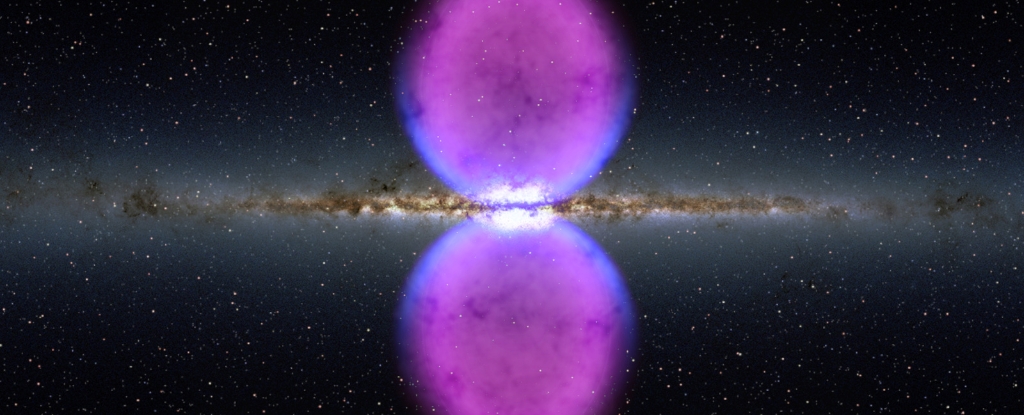
Surprise Cosmic Clouds Likened to Finding Ice Cubes in a Volcano : ScienceAlert
Astronomers have found 11 unexpectedly cold hydrogen clouds hiding in the superheated turbulence of the Fermi Bubbles, in a discovery likened to finding ice cubes inside a volcano.
The Fermi Bubbles are two lobes of incredibly energetic gas that extend 25,000 light-years above and below the Milky Way’s disk, spanning a total height of 50,000 light-years.
These still-mysterious structures were revealed in 2010 by the Fermi Gamma-Ray Space Telescope, which gave them their name. They originated from an outburst of galactic proportions, likely from the Milky Way’s central black hole, and are moving at millions of miles per hour.
Related: Giant Bubbles Expanding From The Milky Way Could Be Explained by a Single Event
Now, using the unique capabilities of the US National Science Foundation Green Bank Telescope (NSF GBT), astronomers performed the deepest-ever radio survey of the Fermi Bubbles, twice as sensitive as previous surveys, and discovered 11 relatively cool, neutral hydrogen clouds embedded within these extreme environs.
The Milky Way harbors many violent environments and the Fermi Bubbles are among the most intense. The plasma here reaches a temperature around 1 million Kelvin (999,730 degrees Celsius), so it’s a surprise to spot hydrogen clouds that are at least 100 times cooler, or about 10,000 Kelvin.
In fact, seeing such relatively frigid hydrogen clouds within the Fermi Bubbles is akin to “finding ice cubes in a volcano,” explains Andrew Fox, astronomer at the Space Telescope Science Institute and study co-author.
The discovery provides an existential galactic conundrum: “We didn’t know that cold gas can survive in these extreme outflows. This challenges our understanding of how galaxies recycle and expel matter,” says Rongmon Bordoloi, astrophysicist at North Carolina State University and the study’s lead researcher.
The hydrogen clouds vary in mass and size. The 8 that have been more clearly resolved are up to 1,470 solar masses and range between 13 and 91 light-years in length. They’re also the highest latitude-hydrogen clouds yet discovered, about 13,000 light-years above the Milky Way’s center.
Given their structure and energetic surroundings, astronomers estimate that the hydrogen clouds may be several million years old. This matches an independent estimate of the age of the Fermi Bubbles themselves, challenging other formation models that suggest the bubbles could be as many as tens of millions of years in age.
“It wouldn’t be possible for the clouds to be present at all if the Fermi bubbles were 10 million years old or older,” explains Bordoloi.
Illustration showing location of hydrogen gas clouds in relation to the Fermi Bubbles (purple) as well as the Sun. (NSF/AUI/NSF NRAO/P.Vosteen) Their extrapolated age suggests the hydrogen clouds were carried high into the Fermi Bubbles by the nuclear wind, or outflow from the Milky Way’s nucleus. This wind, which blasts out at hundreds of kilometers per second, is responsible for cycling mass and energy throughout a galaxy, circulating it from the galactic center to the galactic halo.
Jay Lockman, astronomer at the Green Bank Observatory and study co-author, clarifies the importance of the clouds in revealing the nuclear wind: “Just as you can’t see the motion of the wind on Earth unless there are clouds to track it, we can’t see the hot wind from the Milky Way but can detect radio emission from the cold clouds it carries along.”
As on Earth, these clouds are ephemeral, with a projected lifespan of up to 8 million years – a snap of the fingers on galactic timescales. In fact, they’ve already changed much, and may have been part of a larger cloud that was fragmented by the surrounding plasma. Conversely, the hydrogen clouds may have condensed from the surrounding plasma due to thermal instability.
Overall, this study has universal implications. Finding such cool hydrogen clouds within the chaos of the Fermi Bubbles isn’t just relevant to the Milky Way. It also helps improve models of galactic evolution, reshaping astronomers’ understanding of how matter and energy are cycled throughout galaxies across the cosmos.
This research is published in The Astrophysical Journal Letters.
Continue Reading
-
Betelgeuse’s long-lost companion emerges from the shadows – Astronomy Magazine
- Betelgeuse’s long-lost companion emerges from the shadows Astronomy Magazine
- Astronomers discover blazing Betelgeuse has companion star Dawn
- It’s Official: Betelgeuse Has a Binary ‘Twin’, And It’s Already Doomed ScienceAlert
- Betelgeuse’s hidden companion star, Siwarha, discovered after a century of mystery The Brighter Side of News
- NASA Scientist Finds Predicted Companion Star to Betelgeuse NASA (.gov)
Continue Reading
-

Ancient human relative cannibalized toddlers, 850,000-year-old neck bone reveals
Around 850,000 years ago, a toddler was decapitated and cannibalized, cut marks on one of their neck bones suggest.
The bone, which belonged to an archaic human relative, was found at the Gran Dolina cave at the archaeological site of Atapuerca in northern Spain. An analysis of the bone indicates that the child was between 2 and 5 years old when they died.
“This case is particularly striking, not only because of the child’s age, but also due to the precision of the cut marks,” Palmira Saladié, co-director of the Gran Dolina excavation, said in a statement Thursday (July 24). “It is direct evidence that the child was processed like any other prey.”
The research team excavated a set of 10 skeletons this month, many of which show defleshing cuts and intentional fractures typically found on the bones of animals that were eaten.
All of the newly uncovered skeletons belonged to Homo antecessor, a species of archaic human that went extinct around 770,000 years ago. H. antecessor has only been identified at the Atapuerca site, so its position in the human family tree is unclear. Since it was discovered in 1997, experts have debated whether this ancient human group was the ancestor of Neanderthals and humans or whether it was an offshoot of the human lineage. Either way, H. antecessor is the earliest human relative found in Europe.
Gran Dolina cave has already revealed more than two dozen examples of human cannibalism over three decades of excavation at the site. And roughly 30% of the bones found in the cave so far have cut marks that suggest these early humans were eaten.
“The preservation of the fossil surfaces is extraordinary,” Saladié told Live Science in an email. “The cut marks on the bones do not appear in isolation. Human bite marks have been identified on the bones — this is the most reliable evidence that the bodies found at the site were indeed consumed.”
The newfound skeletons reinforce the idea that early humans used their companions as a food resource and perhaps as a means of controlling territory, the researchers said.
Related: Human ancestors arrived in Western Europe much earlier than previously thought, fossil face fragments reveal
“What we are documenting now is the continuity of that [cannibalism] behaviour,” Saladié said. “The treatment of the dead was not exceptional, but repeated.”
Excavation work at level TD6 of Gran Dolina (Sierra de Atapuerca, Burgos) in Spain (Image credit: Maria D. Guillén / IPHES-CERCA) The 10 skeletons, including the decapitated and cannibalized toddler, were found in a level that’s been dated to between 850,000 and 780,000 years ago. These dates make the bones the earliest evidence of human relatives in Europe — and also the earliest definitive example of human cannibalism to date. (Earlier evidence of cannibalism among human relatives dates to 1.45 million years ago in Kenya, but it’s less clear whether those cut marks are from cannibalism or something else.)
Gran Dolina has not yet been fully excavated, however, and it may be hiding more human remains that could shed light on the enigmatic human relative H. antecessor.
“Every year we uncover new evidence that forces us to rethink how they lived, how they died, and how the dead were treated nearly a million years ago,” Saladié said.
Continue Reading